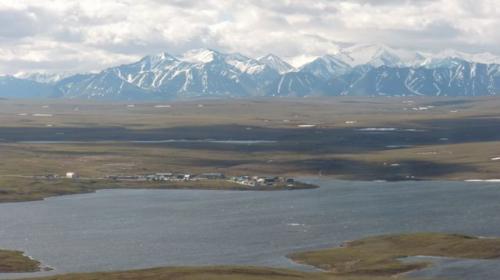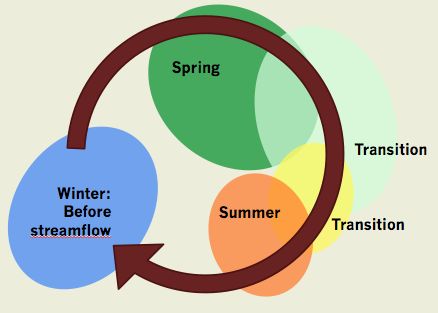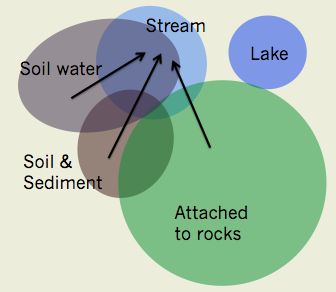What does it all mean?
I've tried to introduce you to Byron's microbial research over the course of my stay at Toolik. I want to take this journal to try and relay what some of his findings have been, and why this should be something that we care about even if we don't all live in the Arctic.
The Goal
Byron initially set out upon this particular project as a biogeography project, he wanted to better understand what different microbes were found in these Arctic waters, and if they varied from place to place. He was simply exploring uncharted territory that was previously unaccessible due to technology- DNA sequencing to advance to make this a possibility.
Byron knew from all of his previous research and education that microbes are critical in ecosystem functioning. As you have read throughout the journals you now know they play key roles in cycling nutrients like carbon and nitrogen, and without them we (and probably most other species) wouldn't be able to survive. Byron believed that we should better understand the organisms that were playing such a vital role in our lives and the world around us.
The Findings
Toolik Lake

There were several sub-projects that took place throughout the LTREB project (in its 8th of 10 years). The first was to look at Toolik Lake and understand its microbial communities. By collecting samples over the span of a year Byron identified that the microbial communities change as the seasons changed. The microbes present in the winter didn't stick around all year, but started shifting as spring and summer approached. He repeated the same experiment year after year and found that this same pattern continued. It was a cycle!

To read these diagrams consider each of the colored bubbles as a group of samples collected during a specific time frame. The closer together they are, the bacteria in the samples; the further apart, the more different. Each season's samples had similar microbes present.
Think about the different seasons at your home. Each one has different characteristics, right? Summer is hotter, and has more light, more plants grow during this time. And winter is colder, darker and less growth happens then. These same patterns exist in the Arctic. It makes since that as seasons change different species are better suited, or adapted, to live in the different conditions. This was precisely the pattern Byron saw in Toolik Lake. Now with DNA sequencing he is able to see which types of microbes were present at these different times.
A future project is to delve into the different jobs each type of bacteria does in the ecosystem to understand what each is contributing during different seasons. There is still so much we don't know about microbes!
I-6 Headwater Stream
Another project that Byron has been working on is a more landscape-wide microbial community comparison. It is clear when you think about a lake vs. a stream there are some similarities and some differences. How might these differences impact the microbial communities living in these waters? And what if we broadened it to look at the microbes on rocks, in the soil, and in the water that flows beneath the stream? Could it be that each of these areas have different microbial communities?

It turns out that it is true, each of these different environments has distinct microbes that live there. Again, different conditions cause different microbes to be suited to living there.
Interestingly another pattern he noted was that there was considerable overlap between the stream and each of the upslope communities. The soil microbes for instance were washed into the stream as the water traveled there. So the stream was an area of mixing of different types of microbes. However, once the water left the stream and entered the lakes, it became clear that the lakes had their own distinct microbes that are far more common than any of the upslope communities.
We can learn from this that these areas influence one another, but that the lake is least influenced by microbial communities upstream. Once again, a future project will be to look into trying to understand what each microbe is contributing.
The Moral of the Story
Byron is trying to figure out the who is present, when they are present, where they are present through this project. The plan for the future is to figure out more about what they are doing, and why they are doing it.
In my next journal I will try to help shed some additional light on why we should care about these patterns that happen in the Arctic anyway.
Species Journal
Byron, Sarah and Hannah headed out on day 1 of the bacterial survey. A two day sampling extravaganza to collect samples from 36 lakes! There wasn't room in the helicopter for me, so I stayed behind and helped filter some of their samples when they dropped them off in camp.
No new species sightings for today.



Comments